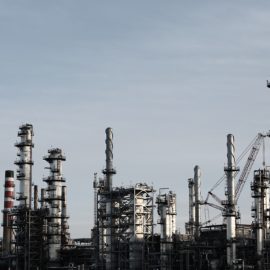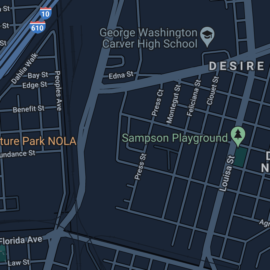
The EPA says the state is violating the law by sanctioning emissions.
The Environmental Protection Agency says the state is violating federal law by allowing manufacturers to release toxic air pollutants in amounts greater than their permits specify during plant startups, shutdowns and malfunctions, including those resulting from hurricanes, tropical storms or accidents. EPA contends that facility designs should already take into account the potential for reducing or eliminating emission increases during such periods, and their air permits already should reflect that potential. Additional emissions should be considered permit violations by the Louisiana Department of Environmental Quality, it says.
nola.com
THe specific cases are numerous.
But an EPA review of Louisiana permitting records between Jan. 1, 2021, and Oct. 18, 2022, found 205 permit variances allowing additional emissions above permit limits, including: Shell Chemical Co. in Norco, emissions above permit limits during restart of the plant after Hurricane Ida, for seven months between October 2021 and April 2022, including more than 7 tons of particulate matter, 49 tons of sulfur dioxide, 34 tons of nitrogen oxide, 145 tons of carbon monoxide, 68 tons of volatile organic compounds, 5 tons of 1,3-Butadiene, 52 tons of benzene, and smaller amounts of several other chemicals; Cameron LNG facility in Hackberry, emissions above permit limits from a ground flare for seven months in 2021 and 2022, including 22 tons of volatile organic carbon; Koch Methanol in St. James, emissions above permit limits for a year ending in October 2022 during the plant’s commissioning and shakedown period, including 11 tons of nitrogen oxide, 47 tons of carbon monoxide, both twice as much as the permit allowed, and smaller amounts of particulate matter and Linde Inc. in Geismar, emissions related to the company’s new syngas facility that were not included in its permit for five months ending in April 2022, including 2 ½ tons of nitrogen oxide and 5 tons of carbon monoxide.
The LDEQ has rules that say that if the rules cause a “hardship” they will not be enforced.
The agency objects to a part of Louisiana’s environmental regulations allowing the granting of a variance if a state official “finds that by reason of exceptional circumstances strict conformity with any provisions of [Louisiana’s air quality] regulations would cause undue hardship, would be unreasonable, impractical or not feasible under the circumstances.” In a Feb. 24 Federal Register filing, the EPA asked the state to change the policy. EPA said the federal Clean Air Act doesn’t allow for exemptions from state-set emission limits. Louisiana’s rule could interfere with future EPA enforcement because the emissions were deemed allowable by the state’s variance, the EPA said in its filing. More importantly, the filing said, the state provision could be read as authorizing the state official to create an exemption from emission limits set by federal law. And while Louisiana’s rule includes a line saying that “no variance may permit or authorize the maintenance of a nuisance, or a danger to public health or safety,” the EPA filing said that provision doesn’t provide objective criteria “that might allow for meaningful EPA or citizen enforcement.”
The EPA specifically noted two regulations but will our state legislature change them?
The filing said the two state regulation segments provide EPA the basis to declare the state’s implementation plan to be “substantially inadequate,” a level required for the agency to request the state to change both. As complicated as EPA’s arguments seem to be, the agency’s actions fall within an even more complicated history of changes in the way the agency has handled regulation of startup, shutdown and malfunction emissions, dating as far back as 1977, when the first state implementation plans were proposed. The Clean Air Act sets up a partnership between the EPA and states where the EPA establishes requirements for reducing emissions to safe levels, but leaves it to states to create their own “state implementation plans” for doing so. Early on, the issue of emissions from startups, shutdowns and malfunctions became a legal football. At first, EPA allowed some leeway in state plans for how states should handle them. But in 2010, the Sierra Club and other environmental groups challenged EPA’s existing scheme, and in 2015, after agreeing to a settlement with the environmental groups, EPA proposed updating most state plans to eliminate exemptions. Those rule changes were challenged in federal court in cases that are still making their way through the court system. In 2020, at the end of the administration of President Donald Trump, EPA issued notices that it was rescinding most of the 2015 changes. In 2022, EPA reversed course again, notifying states that the Trump rule changes were withdrawn and that new calls for changes in state plans would be issued in the near future.
This was not a specific Louisiana missive as other states were taken to task.
The request that included the proposed Louisiana changes also includes calls for three states whose plans were withdrawn in 2020 to have their more stringent plans put back in place. Five other states were notified that they had problems with their plans that were similar to the issues in Louisiana. A spokesperson for DEQ pointed out that new EPA recommendation for changing the state’s rules is only a proposal, and said the state agency has not yet taken a position on whether a change was needed. But the Louisiana Chemical Association this week issued a statement attacking the EPA proposal. “It is inappropriate for the EPA to issue this rule because this takes away Louisiana’s ability to allow sources to safely restart after a malfunction without violating the law,” said association head Greg Bowser. “It is also premature to issue this finding as there is currently pending litigation on this issue.” He said EPA and the states have always acknowledged “that excess emissions that are produced during SSM events are generally not avoidable.” And he said EPA itself has issued past guidance stating it is “unreasonable to expect that careful planning can eliminate emissions” during such events. “If the EPA is going to prohibit states from having the ability to issue variances during SSM events, then facilities will need increased emission limits to take into account the higher emissions that occur during non-typical, non-steady state operations,” Bowser said.
Lets pollute and not worry about it. The EPA has spoken on this earlier.
However, as early as 1983, EPA officials issued memoranda to states saying that industry should consider startups and shutdowns as part of their normal operations. State environmental organizations praised the rule change proposal and asked EPA to step up enforcement. “We in Louisiana have seen air pollution from chemical plants during their startup and shutdown operations. We all remember the black clouds that billowed into the air after hurricanes impacted all along Louisiana’s coast and along ‘Cancer/Death Alley,’” said Darryl Malek-Wiley, a spokesman for the Sierra Club, using a phrase activists often attach to the industrialized area along the Mississippi River. “We are happy to see this EPA action and will be making comments to strengthen these rules further.” “Since Louisiana has so many facilities impacted by rules around SSM, this is significant,” said Anne Rolfes, director of the Louisiana Bucket Brigade, an environmental group that helps communities monitor air emissions around chemical plants and refineries. “The Louisiana Department of Environmental Quality has a bad practice of excusing pollution. Variances are just one of the tools that our state uses to help industry dodge the law.”
How do we make the LDEQ a really good LDEQ and not a corporate LDEQ?



